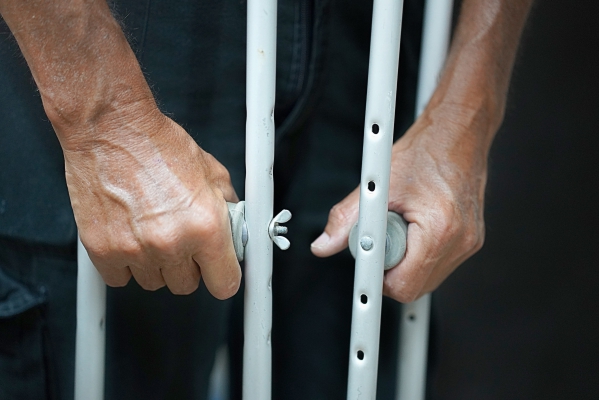What is polio?
Polio is a viral infection caused by the poliovirus that is first known to have occurred around 6000 years ago, as evidenced by the deformed limbs of certain Egyptian mummies. It is also known as poliomyelitis and in its most severe form it can cause nerve injury leading to paralysis, breathing difficulties and death.
The World Health Organisation (WHO) states that wild poliovirus cases have decreased by over 99% since 1988, from around 350,000 cases in more than 125 countries then to 33 reported cases in 2018. In the United States, the last case of polio was in 1979. The cases of polio have decreased significantly due to the development of vaccines against the virus. However, despite the effort to eradicate polio worldwide, this virus continues to affect children and adults in certain parts of Africa and Asia.
The Centers for Disease Control and Prevention (CDC) advises people who are going to places or countries which are known to have the poliovirus to take the necessary precautions to protect themselves and to have a booster dose of inactivated poliovirus vaccine (IPV) for people who have already been vaccinated. Once you have had a booster dose of the polio vaccine, you have lifetime immunity against the virus.
What are the causes and risk factors of polio?
The poliovirus is mainly spread though a faecal-hand-oral route, that is, the infected person spreads the virus in their faeces for weeks which can infect other people through direct contact, contaminated food or water supply. Crowded or unsanitary environments promote the spreading of the virus. In addition, polio affects mainly children under the age of 5 years. Furthermore, unvaccinated people are at increased risk of contracting the viral infection. There are certain infected people who does not develop any signs and symptoms. However, these people are still carriers of the virus, meaning that they can still spread the virus.

What are the signs and symptoms of polio?
The signs and symptoms of polio are often absent in a majority of people and are unaware that they have been infected. However, it can also lead to paralysis and death. The presentation of polio varies and can be categorized into 3 groups, namely, nonparalytic polio, paralytic syndrome and post-polio syndrome.
Nonparalytic polio
In certain people, polio does not lead to paralysis but causes signs and symptoms similar to flu or any other viral illnesses which may last for up to 10 days and these include:
- Sore throat
- Fever
- Fatigue
- Vomiting
- Headache
- Back stiffness or pain
- Neck stiffness or pain
- Stiffness or pain in the arms of legs
- Muscle weakness
- Leg deformity
Paralytic syndrome
This is the most severe form of the disease and is rare. The first signs and symptoms include fever, headache and resembles nonparalytic polio. However, after 1 week other signs and symptoms develop and include:
- Flaccid paralysis: Your limbs becomes loose and you cannot control them.
- Loss of reflexes.
- Severe muscle pain or weakness.
Post-polio syndrome

Post-polio syndrome is a condition which occurs years after polio infection and is a cluster of incapacitating signs and symptoms. The common signs and symptoms of post-polio syndrome include:
- Fatigue.
- Progressive muscle weakness or pain.
- Loss of muscle mass (muscle wasting or atrophy).
- Progressive joint weakness or pain.
- Breathing difficulty.
- Swallowing problems.
- Reduced tolerance to cold temperatures.
- Sleep apnoea which is a sleep related breathing disorder.

Making a diagnosis
To make a diagnosis, your doctor will first take a detailed history from you to know more about your symptoms. After the history taking, your doctor will perform a thorough physical examination to look for signs of polio. Polio is often diagnosed using a good history taking and physical examination. However, your doctor may take a sample of throat secretions, stool or cerebrospinal fluid (a colourless fluid which surrounds you brain and spinal cord) to check for the poliovirus.
What are the treatment of polio?
Unfortunately, there is no cure for polio. The goal of the treatment is to relieve your signs and symptoms and prevent the onset of complications. Pain killers are given to relieve the joint, back neck and muscle pain associated with polio. In addition, portable ventilators can be used to assist breathing. Physical therapy in the form of moderate exercise is done tip recent deformity and loss of muscle function. As a last resort, surgical procedure may be done to correct excessive deformity of the legs or ankles. Orthotic treatment may also be useful which involves your doctor prescribing a prosthesis that is place around the knee which will help you to walk.

What are the complications of polio?
Polio can lead to complications such as:
- Disability.
- Permanent muscle paralysis.
- Bone deformities.
- Breathing difficulties.
- Swallowing difficulties.
- Death.
Expectations (prognosis)
The most effective way to prevent polio is by vaccination. The prognosis of most people is good and most of them recover without complications. However, the prognosis of people with paralytic polio is good to poor as some of them may become disabled for life. There is no cure for polio but is can be prevented using vaccines.

Source:
J. Alastair, I. and Simon, M., 2016. Davidson's Essentials of Medicine. 2nd ed. London: ELSEVIER.
Parveen, K. and Michael, C., 2017. Kumar & Clarks Clinical Medicine. 9th ed. The Netherlands: ELSEVIER.
Ranade, A., 2020. Poliomyelitis.









